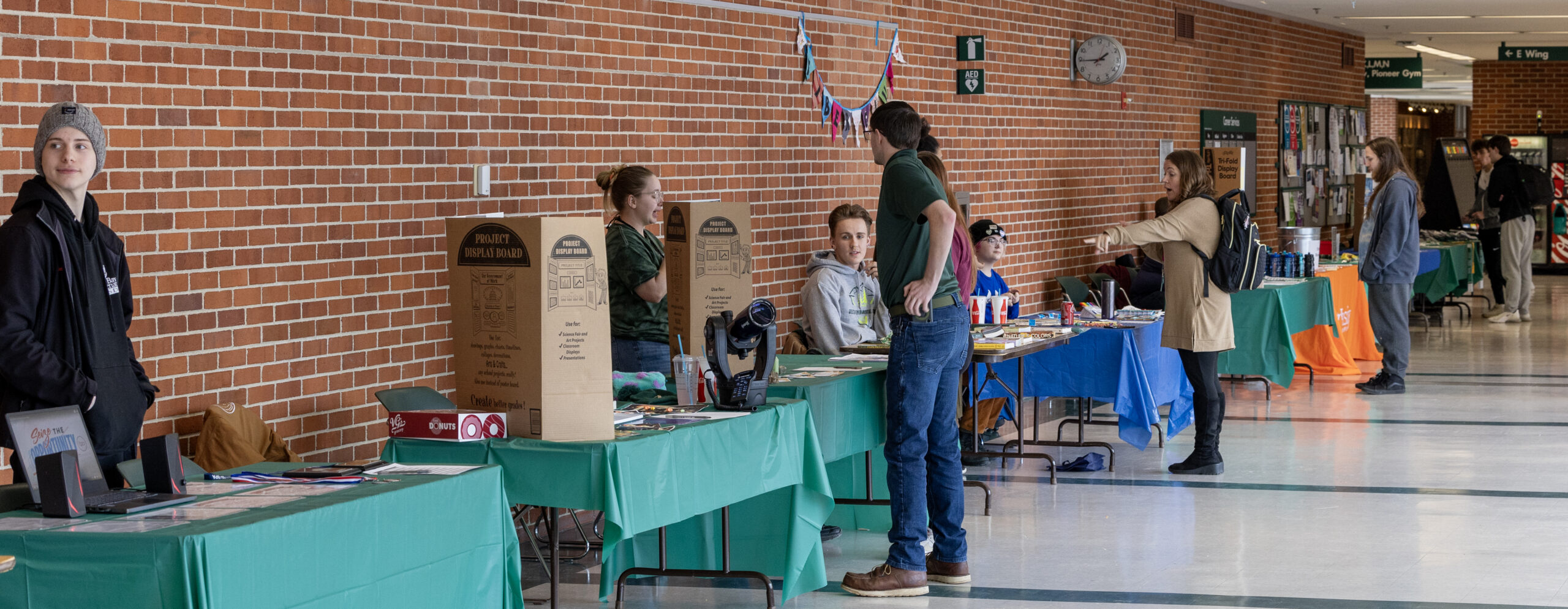By Kathryn Nickell

To celebrate the return of autumn, the Chippewa Nature Center went back to the 1870s honoring the hard work from the summer and the coming harvest.
On Saturday, Oct. 1, at the Fall Harvest Festival in Midland, visitors of all ages enjoyed demonstrations, crafts, and hands-on activities that reflected 19th-century farm life during harvest season. Volunteers and educators were dressed in period attire, illustrating historic forms of cooking, crafts, and way of life.
Upon arrival a wagon ride to the Homestead Farm was available. This is where they were given the opportunity to watch demonstrations of woodcarving, chair caning, beekeeping, cider pressing, seed preservation, blacksmithing, and more.
Hands-on activities included milking a pretend cow, candle dipping, rope making, and crafting your own sheep and potpourri bag.
An opportunity to use historic tools to grind corn was also an option. Historic tools included a corn grinding machine and a milling machine. The participants started with a corn cob and ended with a corn meal to feed the farm animals.
“My favorite activity at this festival has been taking raw corn and making food for the pigs,” said 13-year-old Lane Bray.
“After I turned the lever, the machine shot out just the little pieces of corn, which I took to the mill machine and grinded it up to make corn meal,” Bray explained how he first put a whole corn cob in the corn grinding machine, turned the lever, and stripped the corn from the cob. “Then I got to take the corn meal and feed the friendly pig.”
At the Timber Frame Barn, the Midland Fiber Arts Guild gave visitors a Sheep to Shawl demonstration by teaching about spinning and weaving sheep’s wool.
Near the Sugarhouse, the Oxbow Archeologists had many intriguing finds on display from recent digs, including beads, arrowheads, tobacco pipes, and pottery pieces from early Midland settlers.
Laurie Lowe, an Oxbow Archeologist, said that she has been digging in the Chippewa Nature Center area for 30 years.
“Just recently, we have found pieces of evidence from the first settlers in Midland County,” Lowe said. “It is in forms of all these beautiful and unique broken pottery pieces.”
Visitors were able to tour an old log schoolhouse, fruit and vegetable root cellar, and the Homestead Cabin, all portraying what buildings looked like in the 1870s.
At one corner of the festival was a large, steaming pot over an open fire used for producing apple butter.
Jamie Burton, a historian of domestic life, was dressed to portray an individual in the 1870s. He stood at the large pot, mixing the apple butter with a giant wooden utensil, and described to visitors his love for making apple butter.
“Apple butter is something that anyone can make, all you need is apples!” Burton explained excitedly. “It is made of just apple cider and apple pieces mixed with water and heated to a boil.”
When asked what his favorite part was of making apple butter and the process of harvesting for the fall season, Burton smiled while stirring and said, “It is the community aspect. I can’t do it by myself and that can be scary, but I love how we all depend on each other to survive as a community.”








